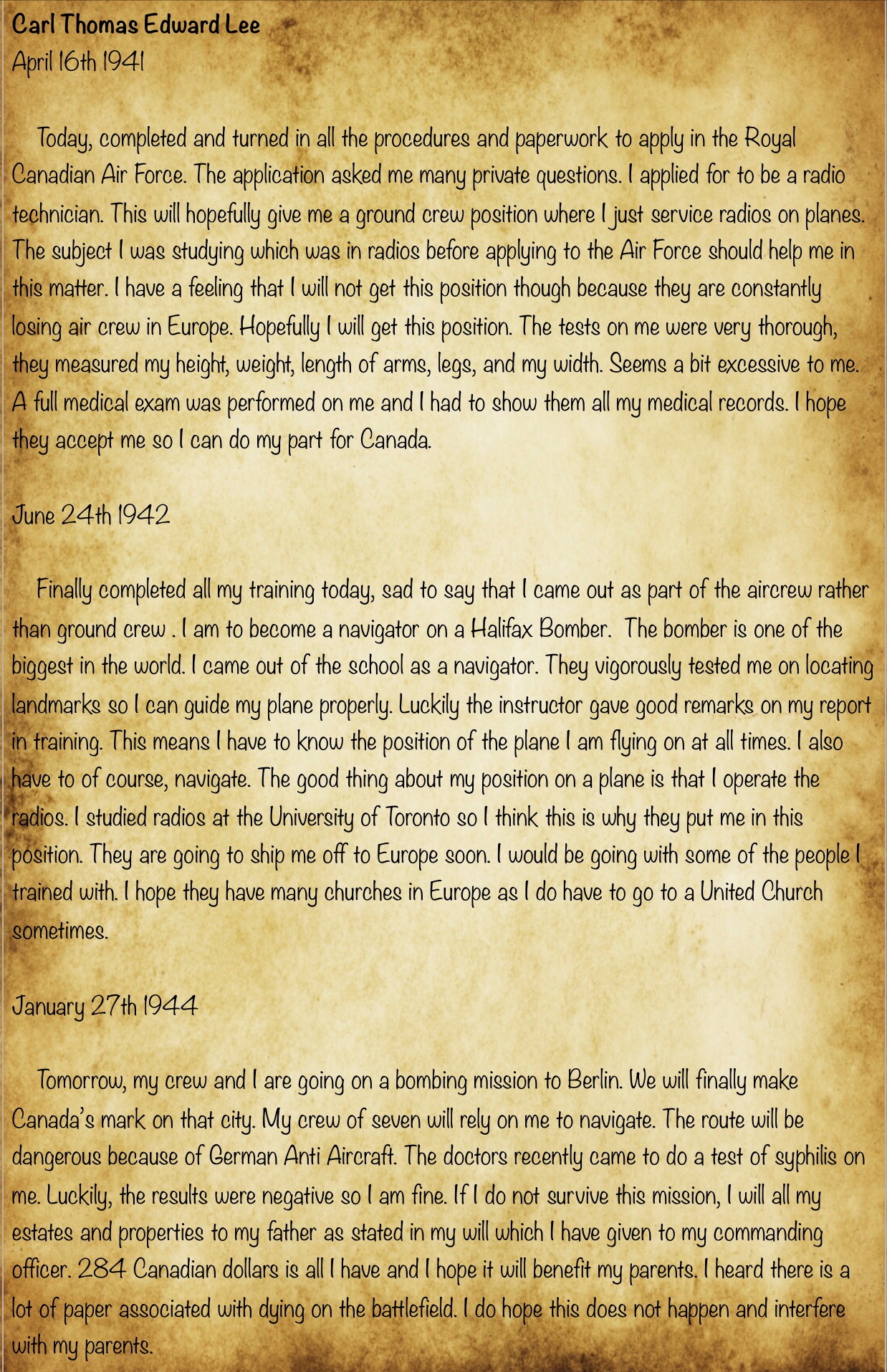With the introduction of World War II in PLP comes another soldier blog post. This is all about learning what the mentality of the soldiers was like back then. It also gives us students some information regarding what the time was like and what people were doing before the war. This blog post will include a diary entry written by me emulating a soldier I researched.
The soldier I researched is called Carl Thomas Edward Lee. I found him through searching through the archives of Canadian dead. I searched with the surname Lee trying to see if I could get an Asian soldier to research but found. I tried other Asian last names to avail so I just stuck with a Caucasian Lee. In his profile, I found many documents of him applying for the Air Force, medical exams, as well many letters informing his parents that he had died in the war.
This soldier was born in February 18th, 1922. He led quite a normal life with no injuries of any kind throughout his life before the war. He went to The University Of Toronto to study radios and how they worked. He was in the middle of his studies when the war broke out. As Canada joined the war, he signed up as a ground crewman for the Air force. He had hoped to be a radio technician as part of the ground team but he was instead trained as a navigator. This meant that he was part of the air crew that flew the warplanes and he was in charge of navigating and also the radios. He came out of training was assigned to bombers. This was late in the war at around late 1943. On January 28th 1944, him and his crew flew a Halifax bomber on a mission to bomb Berlin with other planes. They were shot down over northern Europe and bailed out but was captured. After that, no other records exist that Lee and his crew made it out of the Prisoner of War camp that they would be inevitably sent to if they were not just shot dead after being captured. Many letters were sent to the parents regarding their son’s status which was missing in action. His personal effects were sent home and will enforced after the time of which he was missing for became too long for him to have survived without making contact with Canada.
Below are some diary entries I wrote to show some understanding in what a soldier went through in World War II.







